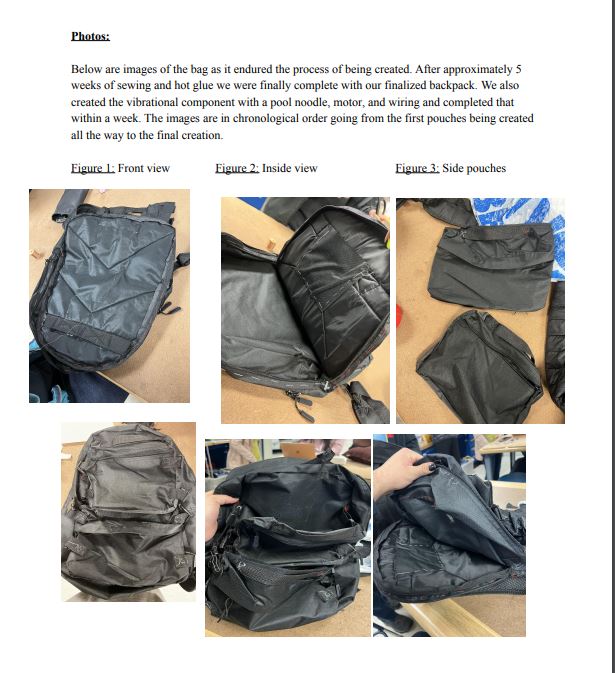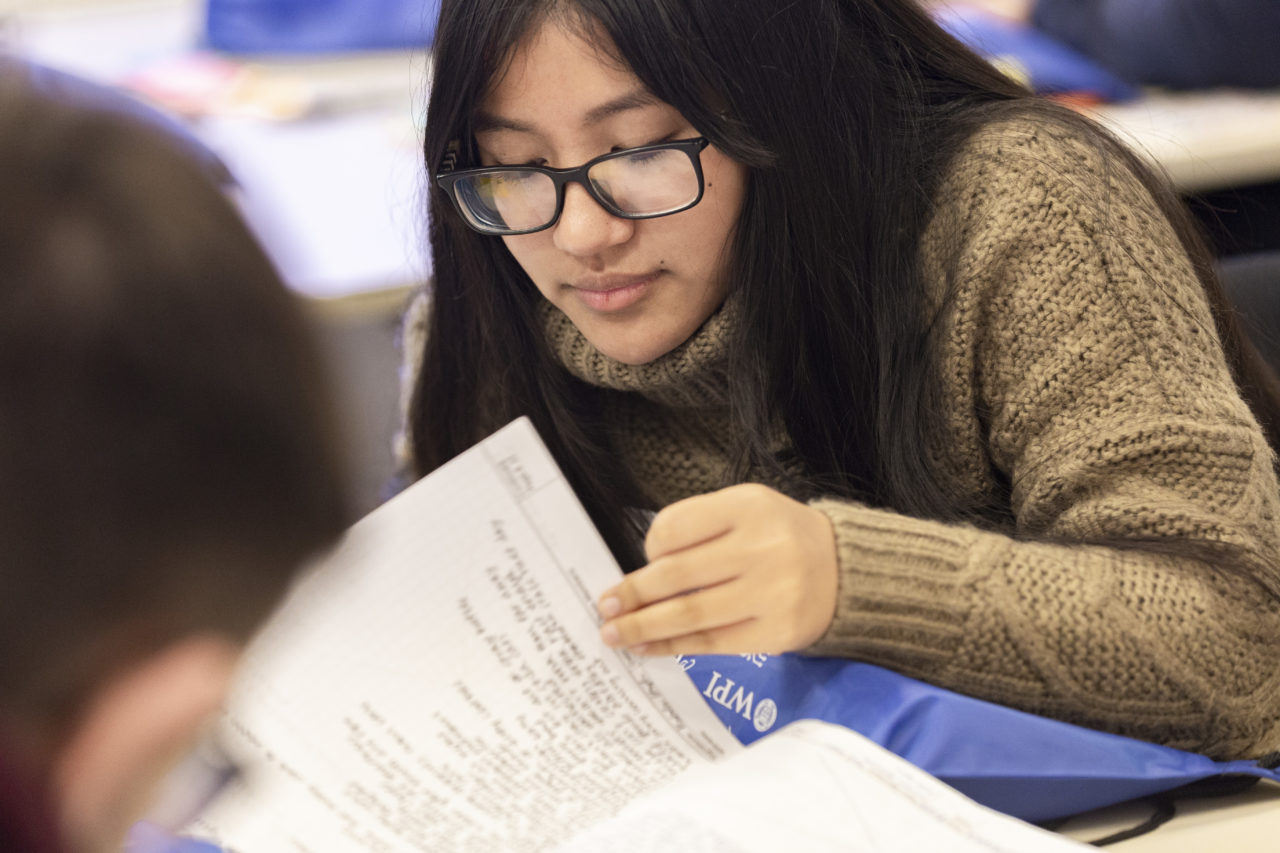
Student Work | Mass STEM Hub
High School | HS Engineering | EDD | Activity: Testing a Prototype | 2nd Place High School Engineering Project
May 26, 2022
Check out the student work submitted for real-world industry feedback! Learn more about submitting student work to receive real-world feedback here!
Grade: High School
PLTW Course: Engineering Design and Development
Submission type: Activity: Testing a Prototype
Project overview: In Engineering Design & Development, student teams focus on one problem. They spend the year researching, designing a solution, prototyping, testing, and presenting. The testing plan and analysis comes as part of the Critical Design Review which evaluates the process by which the team constructed a prototype and developed a testing plan. Ideally every feature of a group’s prototype should be validated by a test. Teams may perform several different tests, which may be conducted at different phases of the construction process.
To define and justify the testing method, teams will need to demonstrate that you are using sound engineering, scientific, and mathematical principles. When applicable, tests that use parts of an American Society for Testing and Materials (ASTM) or (International Organization for Standardization) ISO procedure will generally be easier to define and justify. However, there will be conditions under which it is not reasonable or possible to follow these official procedures, or official procedures do not exist, so teams will have to improvise.
Select student submission materials:


Link to full project: click here
Select judge feedback: “Hi Team! I am a 25 year old Biomedical Engineer. I received my Bachelors of Science at Worcester Polytechnic Institute (WPI), and I now work for Smith and Nephew as a Development Engineer. I focus on improving surgical techniques and tools for sports medicine shoulder and hip injuries.
Great job! I was especially impressed by your engineering drawings of your design. The views are clear and easy to follow. Also, good work explaining the need for your device and how separate components were going to satisfy that need.
I was a little unclear about your massaging component and where it was stored. Did you have a mechanical motor in your backpack? A little more clarity, or even a video, could help communicate that to the reader.
Clear engineering drawings with labels and multiple views is very important to my job! Continue to build on this, as it will be a way for you to demonstrate your ideas for future designs. Backpacks are a great subject to work on improving. I’d encourage you to try out some human wear-testing. Have your friends wear this for a couple of hours and see how it feels!”
-Biomedical Engineer, Smith & Nephew
“Hi Group! I am a Development Engineer at Smith and Nephew, a medical device company. I really like the process you took when designing your backpack. We do something similar in my current job- identifying the things that would be the most important to the user, and then determining how those can be met through the design of the device. The creation of the vibration “pill” was also an interesting way to incorporate the massage aspect into your final design.
One thing I am curious about is how much did it weigh, and if that was taken into consideration when you were testing? Especially since one of your tests involved the carrying capacity, I wasn’t sure if that was in the backpack or not during your testing and if could have impacted your results.
I really appreciated that you included photos of the final backpack in your report, they helped give an idea of the final design and all the work you put in! Looking at your test data, another way that you could have grouped your data to be even clearer was to group the results by the testing you did: one for all the maximum weight testing, one for the carrying capacity, and then for the vibrational functionality. This would have let you show off the data that was successful (the functionality testing), and made it easier to compare the aspects that needed more work. Also in the procedure, it sounded like the control bag was tested three times for each test, but there is only 1 trial listed in the results. It’s important that the data shown lines up with what is supposed to be tested, or there is an explanation why something is missing. This happens in my current job when I am testing a medical device- anything that changed from the protocol that was originally agreed on (even if it is a good thing like I collected extra data points!) has to be captured in the report, or it could make the whole test invalid.
One part of the report I really liked was your conclusion, when you discussed ways that the testing and the bag design could be improved in the future. No design is ever perfect on the first prototype, so being able to assess your testing and identify ways to continue to move forward is really important! I hope you all have a great rest of the school year! Thank you for the opportunity to read about your project.”
-Development Engineer, Smith & Nephew
Industry Award: 2nd Place High School Engineering Project
School: O’Bryant School for Math and Science
Teacher: Elizabeth Raine


